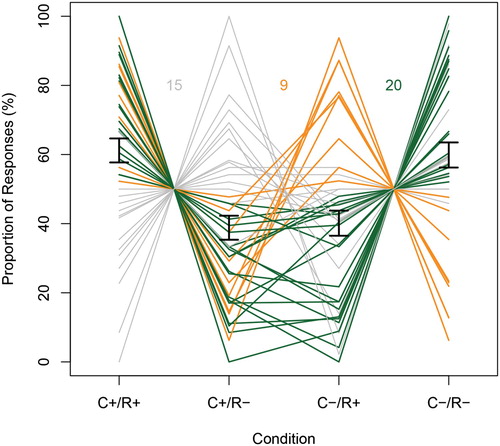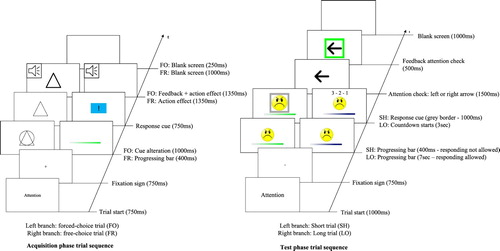Figures & data
Figure 2. Probability of executing actions per condition. Thick black lines indicate the means and the standard errors per condition. Thin green lines show mean responses of participants (N = 20) who responded in line with the TEC hypothesis (C+R+ > C+R− and C−R+ < C−R−). Thin orange lines (N = 9) show mean responses of participants who preferred performing actions with positive outcomes (C+R+ > C+R− and C−R+ > C−R−). Thin grey lines show mean responses of the remaining participants (N = 15). See online version of this Figure for the colour version. C+ = positive cue. C− = negative cue. R+ = response with learned positive outcome. R− = response with learned negative outcome.


